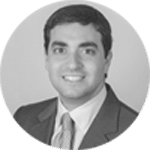Dr. Constantine has a deep experience in plastic surgery of the face and has been involved in some pioneering research related to it. This article from PSRJournal delves into some of the newest developments in modern facial plastic surgery and using fat grafting to achieve a better result.
DOWNLOAD PDF ARTICLE
PSRJournal – Lift-and-Fill Face Lift: Integrating the Fat Compartments
Background:
Recent discovery of the numerous fat compartments of the face has improved our ability to more precisely restore facial volume while rejuvenating it through differential superficial musculoaponeurotic system treatment. Incorporation of selective fat compartment volume restoration along with superficial musculoaponeurotic system manipulation allows for improved control in recontouring while addressing one of the key problems in facial aging, namely, volume deflation. This theory was evaluated by assessing the contour changes from simultaneous face “lifting” and “filling” through fat compartment–guided facial fat transfer.
Methods:
A review of 100 face-lift patients was performed. All patients had an individualized component face lift with fat grafting to the nasolabial fold, deep malar, and high/lateral malar fat compartment locations. Photographic analysis using a computer program was conducted on oblique facial views pre- operatively and postoperatively, to obtain the most projected malar contour point. Two independent observers visually evaluated the malar prominence and nasolabial fold improvements based on standardized photographs.
Results:
Nasolabial fold improved by at least one grade in 81 percent and by over one grade in 11 percent. Malar prominence average projection increase was 13.47 percent and the average amount of lift was 12.24 percent. The malar prominence score improved by at least one grade in 62 percent of the patients postoperatively, and 9 percent had a greater than one grade improvement. Twenty-eight percent of the patients had a convex malar prominence postoperatively compared with 6 percent preoperatively. Malar prominence improved by at least one grade in 63 percent and by over one grade in 10 percent.
Conclusions:
The lift-and-fill face lift merges two key concepts in facial rejuvenation: (1) effective tissue manipulation by means of lifting and tightening in differential vectors according to original facial asymmetry and shape; and (2) selective fat compartment filling of deep malar and high malar locations and nasolabial fold fat grafting to precisely control facial contouring. This was shown with objective numerical grading and through observer assess- ment. (Plast. Reconstr. Surg. 133: 756e, 2014.) CLINICAL QUESTION/LEVEL OF EVIDENCE: Therapeutic, IV.






